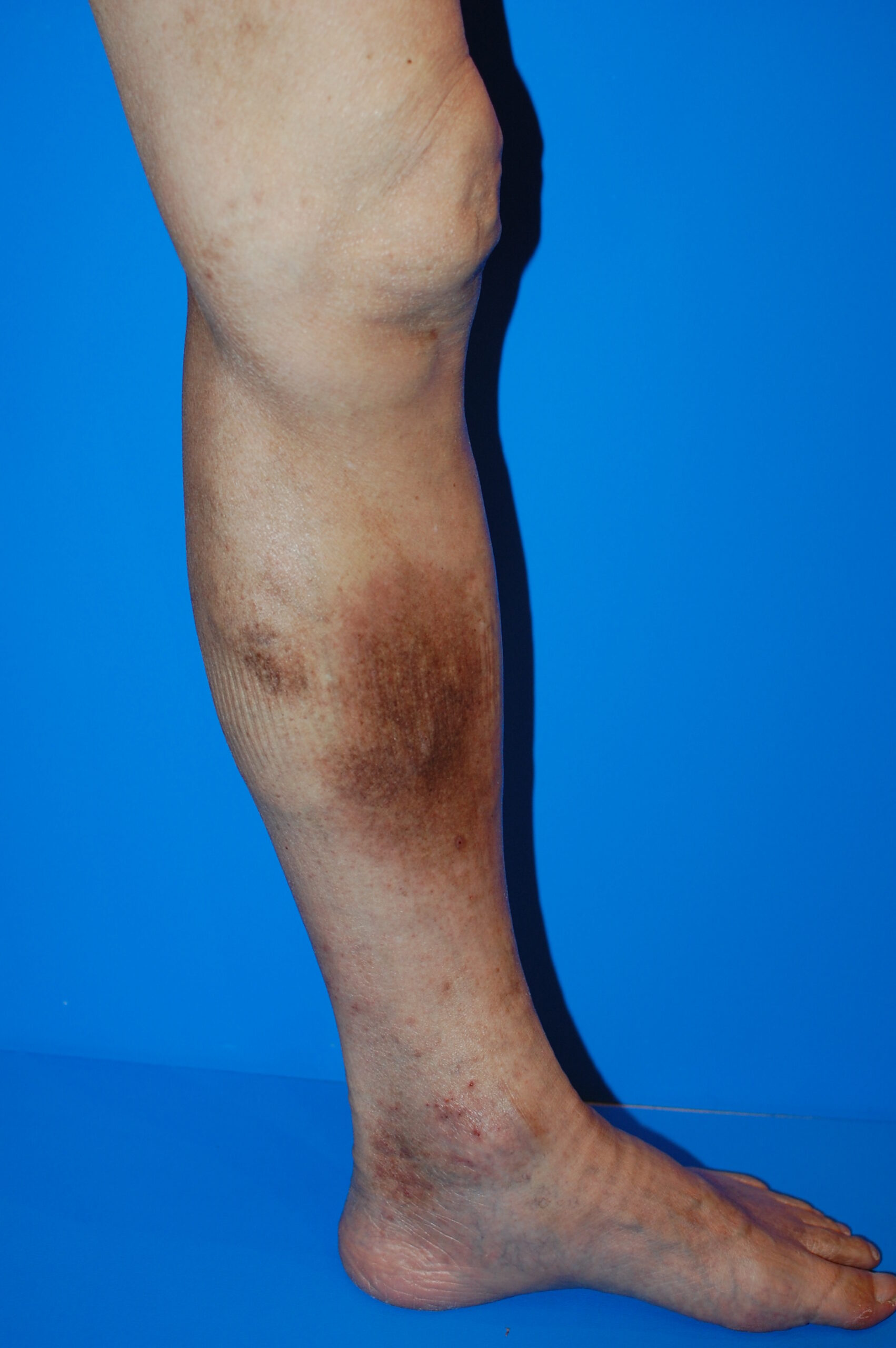Stasis Dermatitis and Pigmentation
Introduction
Stasis dermatitis is a type of dermatitis caused by poor blood flow in the veins of the lower limbs. This condition primarily appears around the ankles and can lead to itching, pain, and even ulcers. However, one of the most noticeable symptoms associated with stasis dermatitis is “pigmentation.” This pigmentation, which causes the skin on the legs to turn brown or blackish, is a significant concern for many patients. In this article, we will discuss the causes and remedies for pigmentation caused by stasis dermatitis.
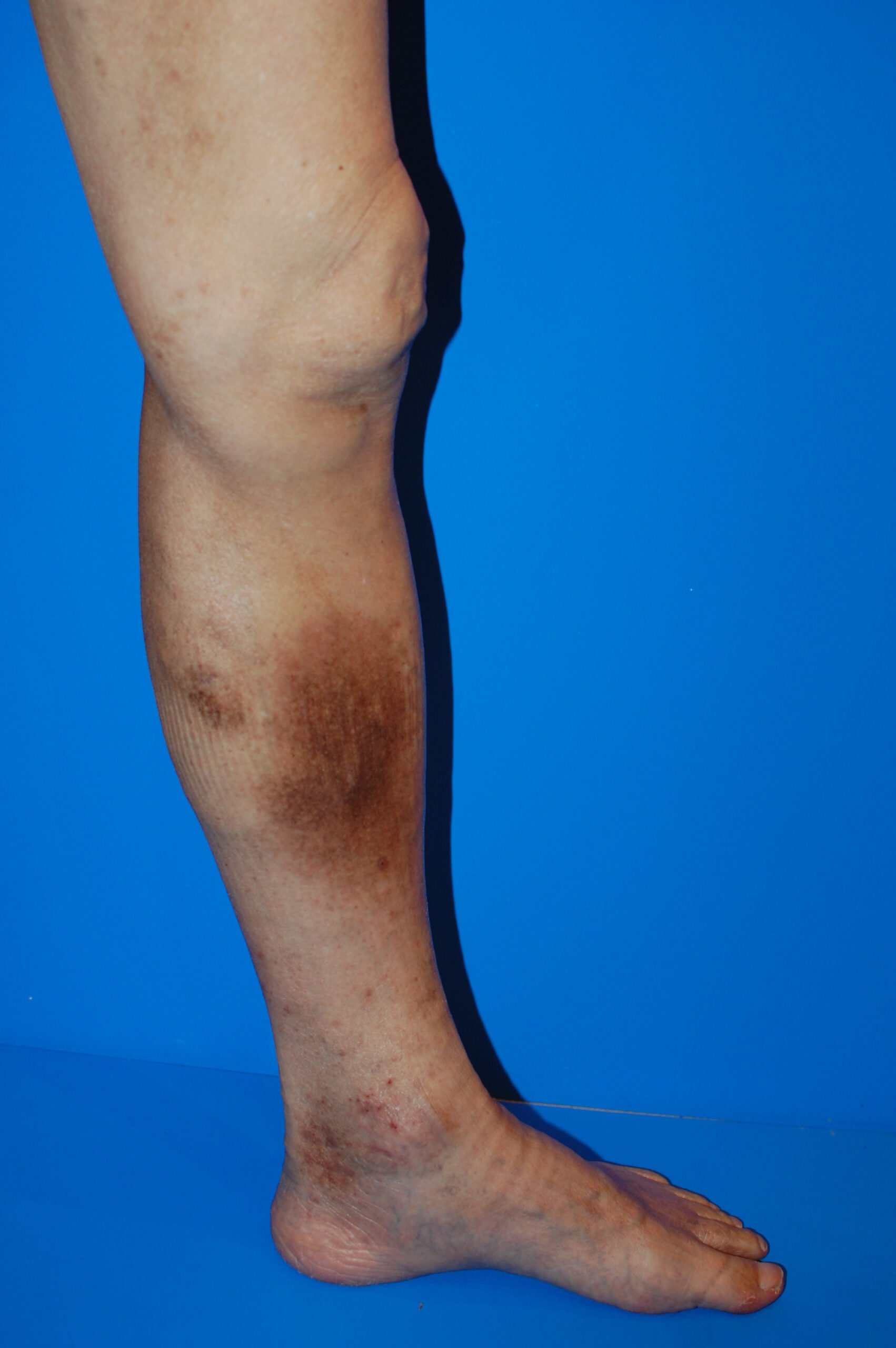
The Cause of Pigmentation: What is Hemosiderin?
The primary cause of pigmentation is a substance called “hemosiderin.” Hemosiderin is an iron-containing pigment released when red blood cells break down. Normally, blood returns to the heart through the veins, but if the valves in the veins do not function properly, blood tends to pool in the veins of the legs. This pooled blood increases pressure, causing capillaries to rupture and blood to leak into the skin. When this happens, red blood cells break down, and hemosiderin deposits in the skin. The accumulation of this hemosiderin leads to brown or blackish pigmentation in the skin.
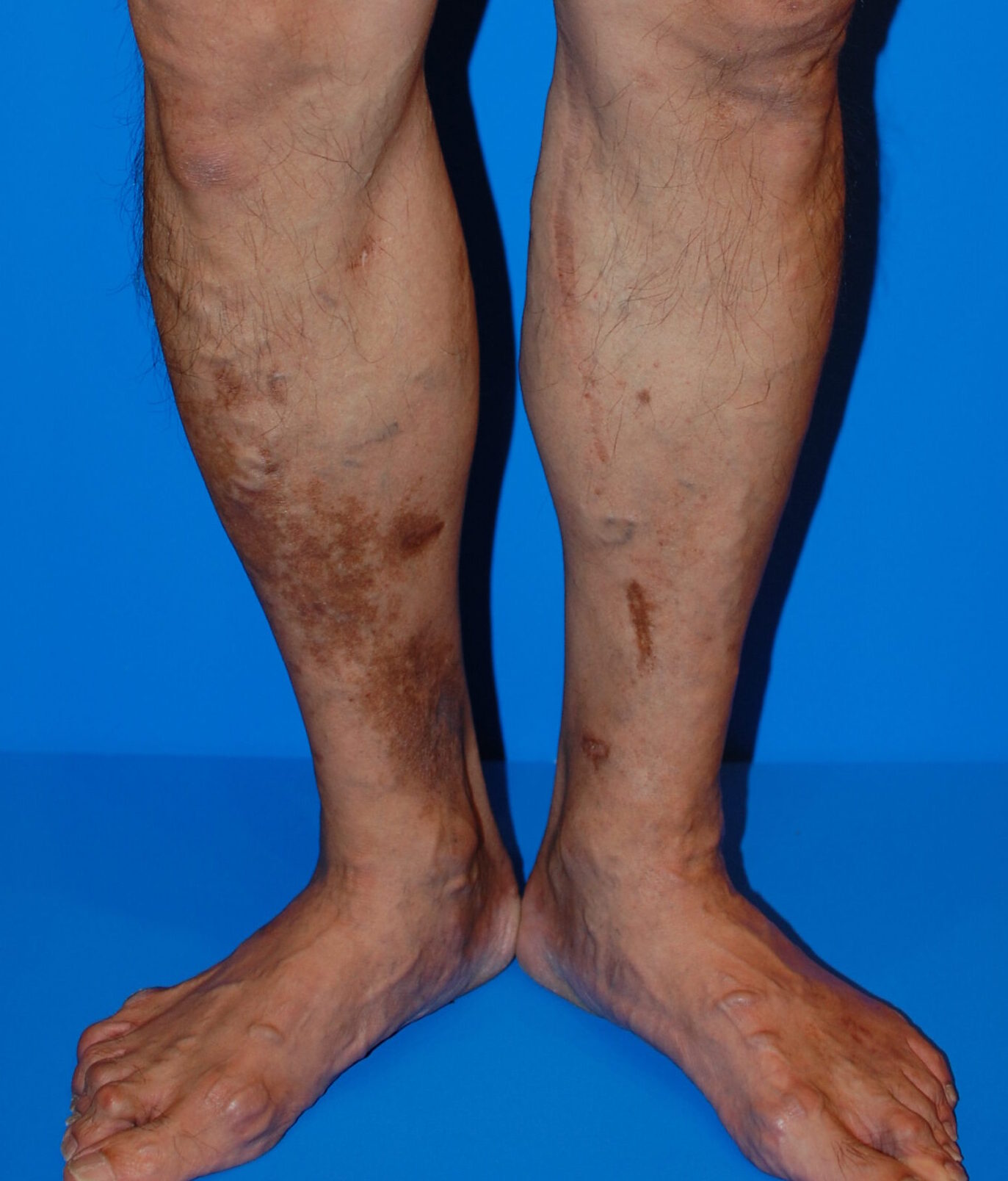

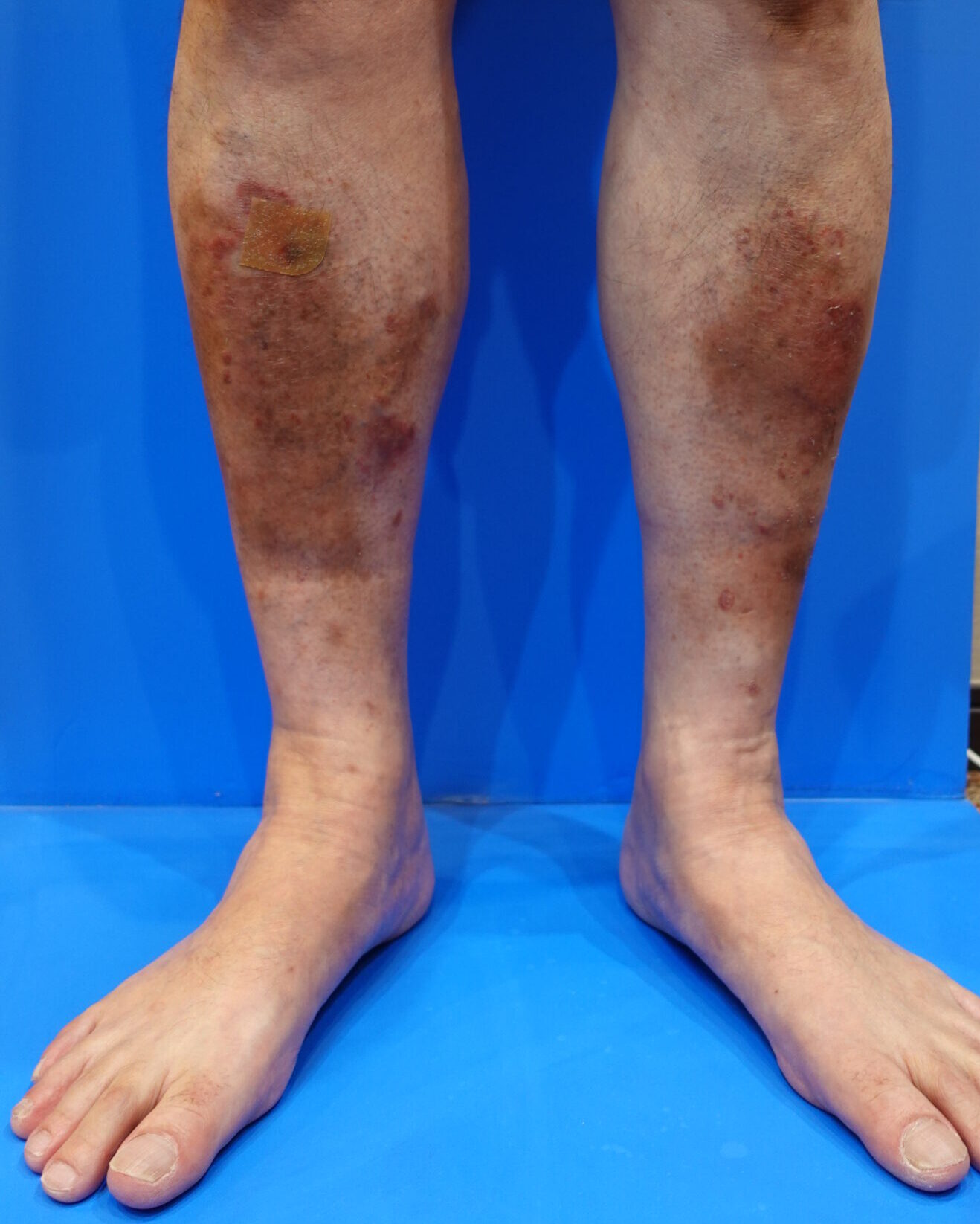
The Reality of Pigmentation: Stubborn Stains
Unfortunately, pigmentation caused by stasis dermatitis is difficult to completely eliminate once it occurs. This is because hemosiderin deposits deeply within the skin. Therefore, preventing pigmentation is the most important measure.
The Risk of Worsening Pigmentation
If venous stasis in the lower limbs is not improved, pigmentation can worsen and spread. In the worst-case scenario, there is a risk of progressing to skin ulcers, which can lead to an increased risk of infection and make treatment more challenging.
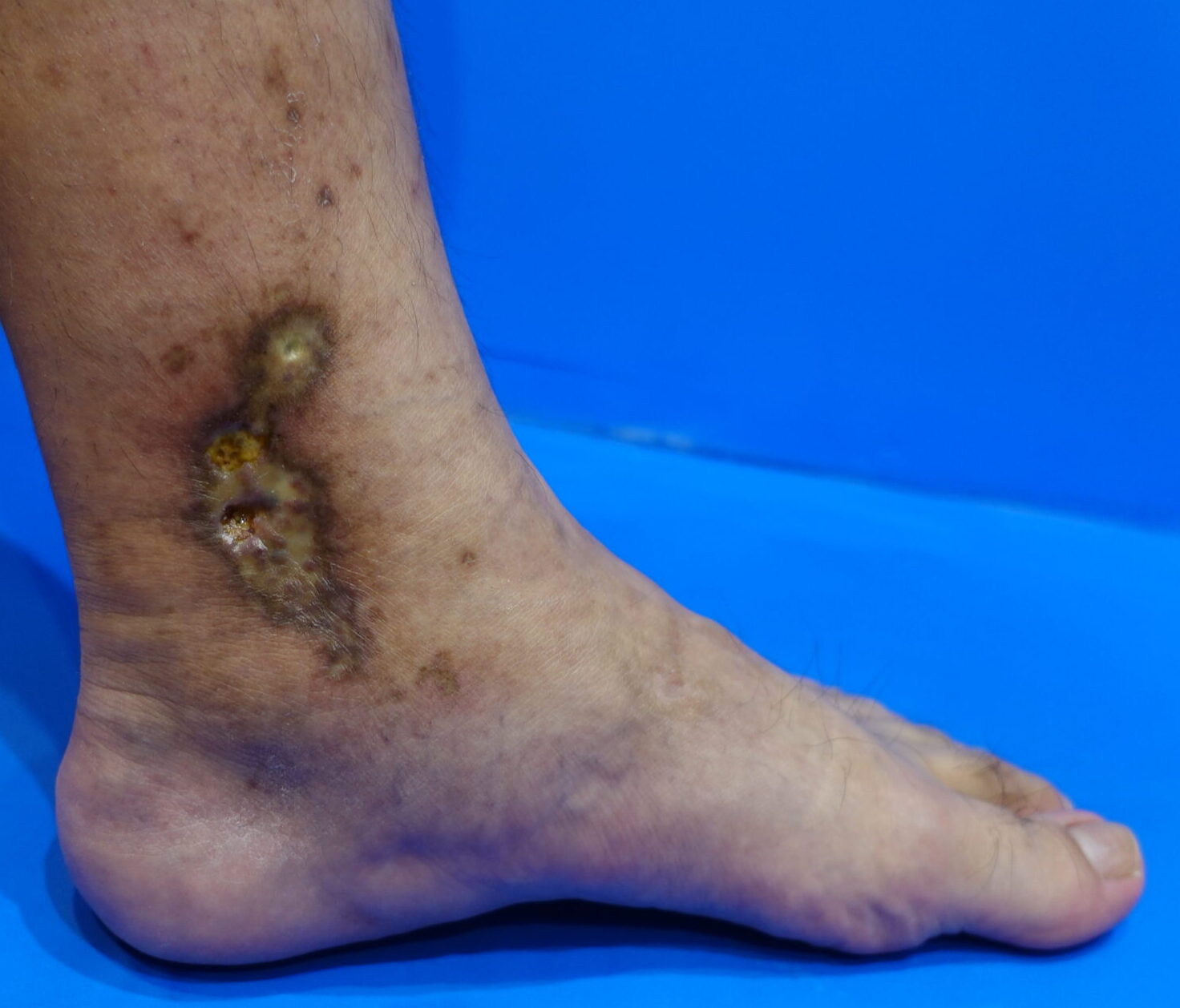
The Relationship Between Stasis Dermatitis and Varicose Veins
Varicose veins play a significant role in the development of stasis dermatitis. Varicose veins occur when the valves in the veins no longer function properly, causing blood to reflux and pool in the veins. If this condition persists, pigmentation may appear on the skin. Therefore, if pigmentation is present, it is crucial to seek medical attention early and receive treatment for varicose veins.
Prevention and Measures
To prevent pigmentation and stop its worsening, it is essential to halt the progression of stasis dermatitis. Prevention and countermeasures can be taken in the following ways:
Compression Therapy: Using compression stockings or bandages can apply pressure to the veins in the legs, promoting blood flow. This helps prevent blood pooling and reduces hemosiderin deposition.
Improvement of Lifestyle Habits: It is essential to maintain lifestyle habits that improve blood flow in the legs, such as avoiding prolonged standing or sitting and incorporating moderate exercise.
Treatment at a Medical Facility: If stasis dermatitis is associated with varicose veins, medical treatment is necessary. Treatments such as laser therapy or sclerotherapy are available to correct vascular abnormalities.
Conclusion
Pigmentation associated with stasis dermatitis is due to the accumulation of hemosiderin and is challenging to completely remove once it occurs. However, with appropriate prevention and measures, it is possible to slow the progression of pigmentation and prevent the worsening of symptoms. Especially if varicose veins are the cause, early treatment can prevent further complications. To protect your health, it is recommended to consult a specialist as soon as you notice any concerning symptoms.


